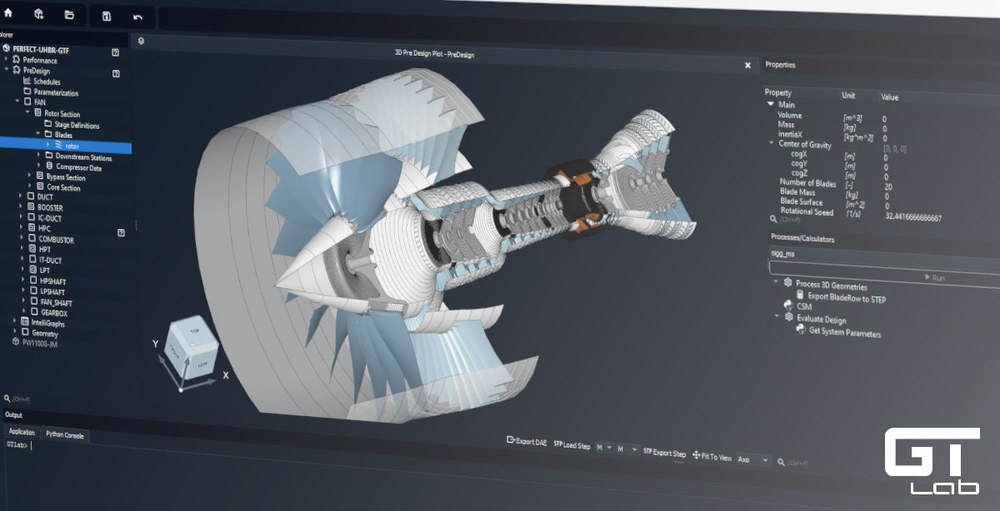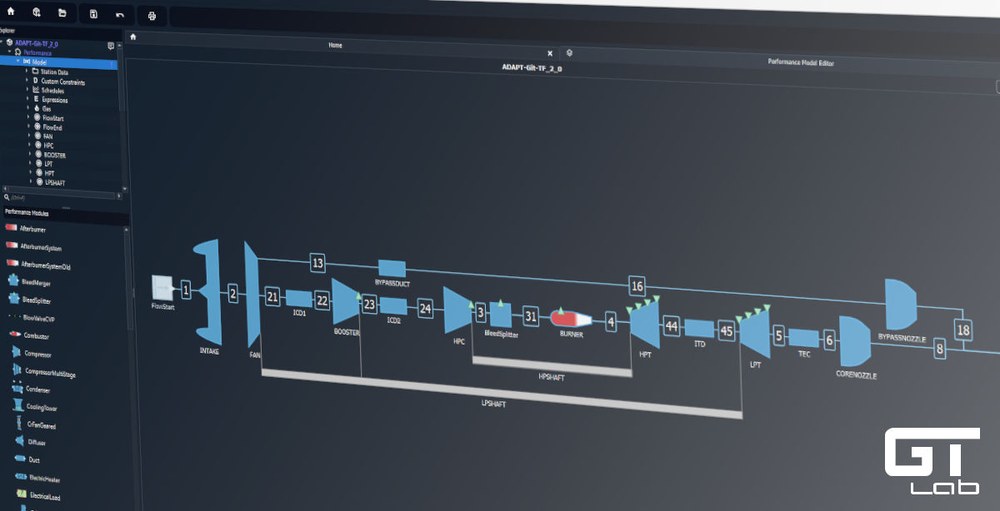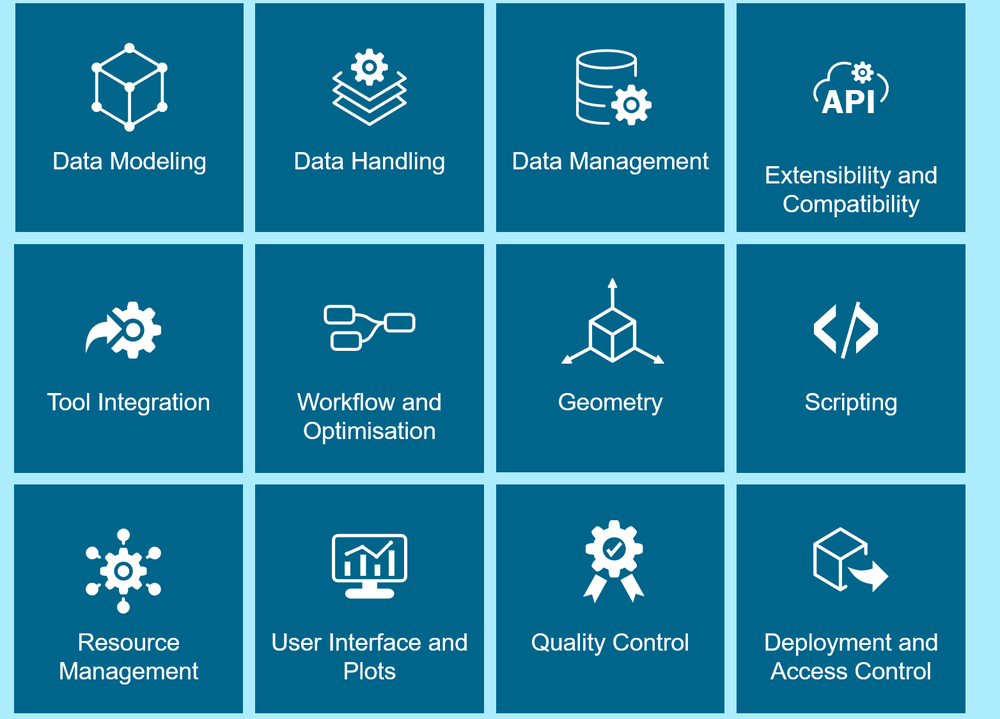Virtual engine with GTlab



GTlab is an integrative framework for answering multidisciplinary questions in propulsion research. The platform enables the design of propulsion systems, stationary gas turbines and turbomachinery, or individual components at different levels of detail – from concept through preliminary design to detailed design and over the entire product lifecycle.
Since 2012, DLR has been developing GTlab, a software solution for the realisation of the virtual engine. GTlab integrates many different software tools from different DLR institutes and enables scientists to collaboratively design, calculate, simulate and optimise propulsion systems. These features open up new research and application opportunities in the fields of thermodynamics, aerodynamics, acoustics, structural mechanics and aeroelastics. GTlab has a modular structure and new functionality is added dynamically via software modules. GTlab is a software framework that provides core functions such as data and process management via interfaces. This means that GTlab can be used far beyond the field of propulsion technology and offers application possibilities in many other specialist areas.
Key features of GTlab

Systems Engineering
GTlab enables the creation and manipulation of data models that form the basis of complex systems. The platform allows the creation of hierarchical, domain-specific data models, such as our detailed model for propulsion systems and stationary gas turbines. Thanks to the standardised and consistent design of all data structures, the framework offers important functions such as loading and saving data, comparing data sets and versioning data. The strong focus on systems engineering helps engineers and developers to focus on system development and reduces the complexity of data management.
Workflow Management
GTlab has a workflow engine for creating and executing complex processes. Calculators are executable programs that can perform anything from simple data manipulation to scientific simulations. Tasks organise the calculators into process chains. In addition, IntelliGraph is an advanced workflow management system that executes processes organised as graphs. By integrating graphical elements such as diagrams, interactive workflows can be designed for a wide range of applications.
Scripting
The built-in Python interpreter can be used to create user-defined process elements such as IntelliGraph nodes and calculators. An interactive console supports rapid prototyping and experimentation. The integrated Matplotlib backend facilitates data visualisation for deeper insight. GTlabs Batch Mode allows processes to be executed via extensible batch commands from the command line, making it ideal for a wide range of automation tasks.
Geometry Generation & Simulation Meshes
GTlab's integrated CAD kernel can be used to create 3D geometries for the main engine components. Based on IntelliGraph, GTlab provides a flexible, automatable solution for geometry pre- and post-processing. This allows geometries to be prepared for a wide range of simulations. GTlab's integrated geometry and mesh visualisation allows you to control the simulation process and evaluate the results.
Data Analytics
Based on IntelliGraph, GTlab provides an interactive data analysis system. It uses Panda Dataframes for analysing and manipulating tabular data, a dedicated Matplotlib backend for generating meaningful diagrams directly in GTlab, and scikit-learn for machine learning algorithms. Powerful and scriptable data filters enable rapid visualisation and reduction of large data sets. Nodes in the analysis process can be implemented using Python scripts.
